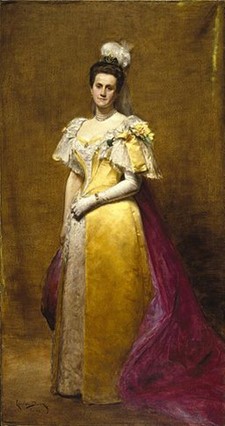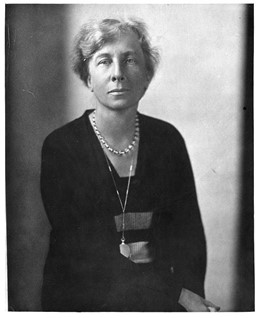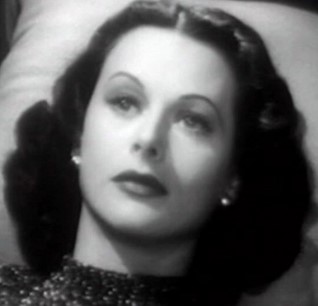Association for Project Management
|
|
Female engineers that shaped the world
Blog posted by: Hayley Mountstevens, 23 Jun 2021.

Female engineers have been responsible for some of the greatest innovations and projects in history. Despite societal barriers and few training opportunities being available in the past, women have played a role in engineering for hundreds of years. To celebrate International Women in Engineering Day, on23 June (launched by the Women’s Engineering Society (WES) in 2014), we take a look at some of the achievements of five inspirational female engineers in history:
Emily Roebling (23 September 1843 – 28 February 1903)
Emily Roebling was an early champion for breaking the glass ceiling for women in science, technology, engineering and maths (STEM) fields. She is best known for her contribution over a period of more than 10 years to the construction of the Brooklyn Bridge, completed in 1883. When her husband Washington Roebling became ill and bedridden, Emily took responsibility of being his liaison with the engineering team. She soon took responsibility for the day-to-day running of the project, managing technical issues, materials, stress analysis, construction and calculations. Upon completion, Emily was the first to cross the bridge, acknowledging her instrumental role in the project’s success.

Photo attribution: Brooklyn Museum, Public domain, via Wikimedia Commons
Edith Clarke (10 February 1883 – 29 October 1959)
Edith Clarke was a pioneer in electrical engineering who used maths to improve our understanding of power transmission. She was the first professionally employed female electrical engineer in the United States and the country’s first full time female professor of electrical engineering. Edith was at the forefront of bringing sophisticated electrical engineering concepts to projects such as dam building – including the Hoover Dam – in the United States, and much of her time was spent at General Electric (GE). Her most famous contribution was the ‘Clarke Calculator’ in 1921, a graphical device that simplified the equations electrical engineers used to understand power lines.

(no image available without copyright)
Lillian Gilbreth (24 May 1878 – 2 January 1972)
Lillian Gilbreth is heralded as a pioneer in the field of industrial engineering and psychology, and often referred to as the ‘mother of modern management’. Together with her husband, Frank Bunker Gilbreth, she developed methods to increase the efficiency of industrial employees, most notably time-and-motion study. Lillian became the first female member of the American Society of Mechanical Engineers and worked with General Electric to improve the design of kitchen and household appliances. As a mother of 12, Gilbreth became recognised not just for her development of industrial management techniques, but also for her ability to combine a career and a family, with California Monthly labelling her ‘a genius in the art of living’.

Photo attribution: Smithsonian Institution, Public domain, via Wikimedia Commons
Hedy Lamarr (9 November 1914 – 19 January 2000)
Hedy Lamarr was an Austrian-American actress and inventor who pioneered the technology that would one day form the basis for today's WiFi, GPS, and Bluetooth communication systems. As well as a 28 year acting career, appearing in 30 films, Hedy, together with co-inventor George Andheil, came up with a new communication system used with the intention of guiding torpedoes to their targets in war. The system involved the use of ‘frequency hopping’ amongst radio waves, with both transmitter and receiver hopping to new frequencies together. Doing so prevented the interception of the radio waves, thereby allowing the torpedo to find its intended target. After its creation, Hedy and George sought a patent (given in 1942) and military support for the invention.

Photo attribution: Public domain, via Wikimedia Commons
Dorothy Vaughan (20 September 1910 —10 November 2008)
Dorothy Vaughan was a human ‘computer’ who worked for NASA and its predecessor agency (the NACA) from the 1940s until the early 1970s. A gifted mathematician and former teacher, Dorothy was the NACA’s first black supervisor, leading a team consisting entirely of African-American women in performing complex mathematical calculations, by hand, before the advent of electronic computing. Her work, and that of her colleagues, made a significant contribution to the American space programme. Seeing that electronic computers were the future, Dorothy became proficient in computer programming, teaching herself the programming language FORTRAN, which she later taught to her co-workers to prepare them for the transition to machine computing.

Photo attribution: NASA on The Commons, Public domain, via Wikimedia Commons
You can find information about International Women in Engineering Day here.
You may also be interested in:
- Women in project management
- Reading the latest issue of Project journal
- Signing up to enjoy the latest project management articles delivered straight to your inbox
About The Aurthor
Hayley Mountstevens
Hayley joined APM in 2019 as PR and Communications Officer and is responsible for helping to increase APM’s authority and visibility across the project profession and different industry sectors, through media relations activity and other communications channels. Prior to APM Hayley worked as a PR Manager in a range of sectors including health, charity and retail.
Original article link: https://www.apm.org.uk/blog/female-engineers-that-shaped-the-world/
- RESOURCES
- MEMBERSHIP
- CHARTERED STANDARD
- QUALIFICATIONS AND TRAINING
- JOBS AND CAREERS
- NEWS AND OPINION
- COMMUNITY
- EVENTS
- BOOKS


